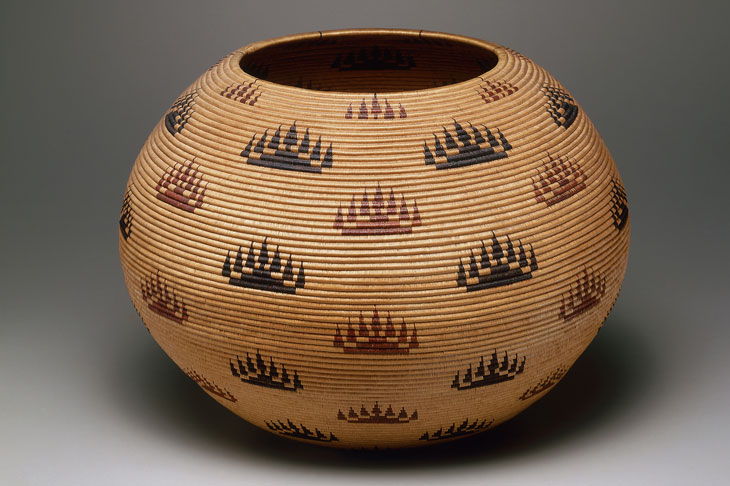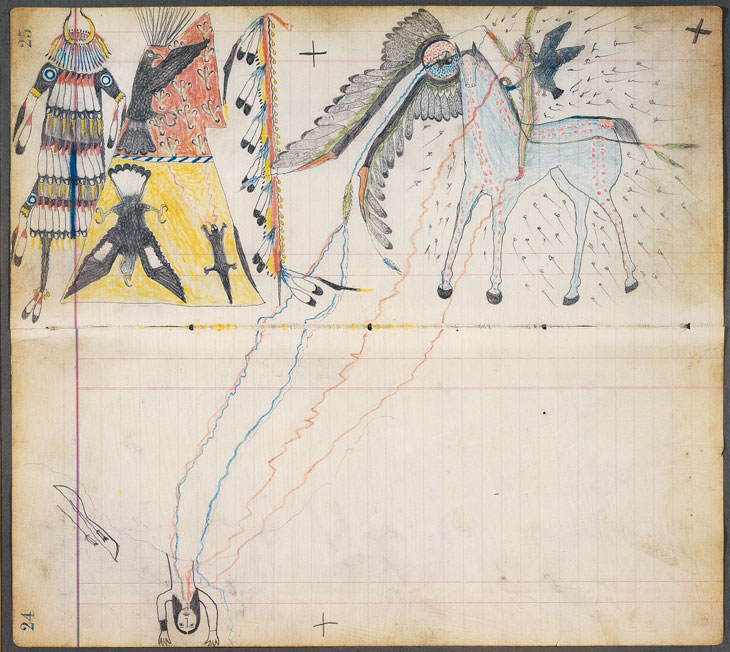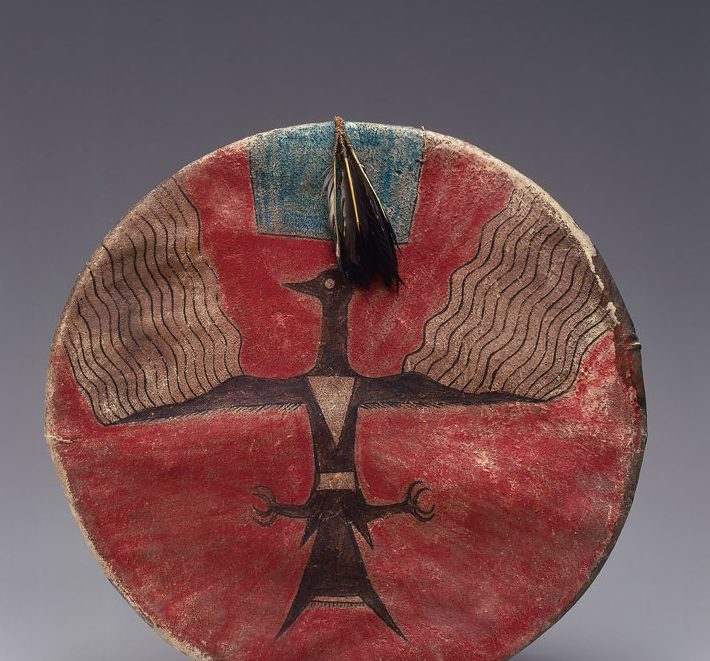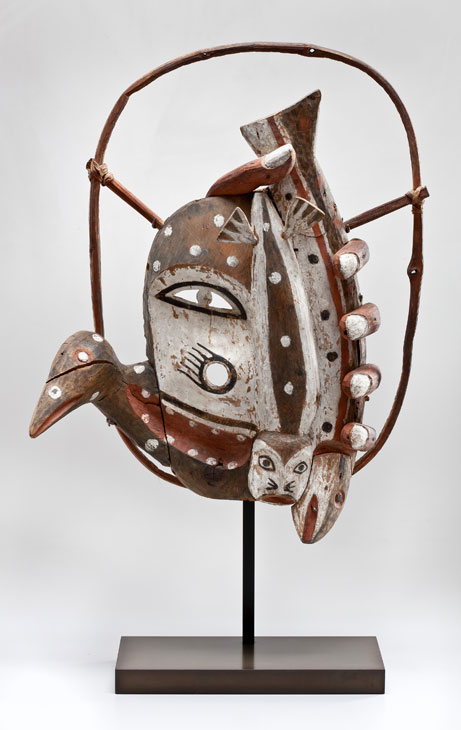A few weeks ago, the press swooned over the Metropolitan Museum of Art’s announcement of a historic change in institutional direction. Valerie and Charles Diker promised a gift of 91 Native American artworks to the Met. Rather than relegating the newly acquired pieces to the galleries for the Arts of Africa, Oceania, and the Americas where they would be displayed alongside non-Western, predominately Indigenous artists, these 91 Native American artists will be presented in the American Wing, interspersed between the likes of John Singer Sargent and Frederic Remington. This decision is important – but not because of what it says about the status of Native art. It’s important for what it says about the evolution of Western museums.

Basket Bowl (1907), Louisa Keyser, also known as Datsolalee, Washoe, Nevada. Part of the promised gift of Charles and Valerie Diker to the Met. Photo: Dirk Bakker
For many generations Native American arts have been defined by Euro-American tastemakers. Collecting ‘curiosities’ during the colonial encounter, non-Indians struggled to make sense of Native culture and aesthetics. For instance, an exhibition to celebrate America’s centennial in 1876 included hundreds of objected crafted by Native peoples. A review in the Atlantic Monthly described Modoc needlework as exhibiting a ‘miserable and helpless ethos.’ A Northwest Coast totem pole is ‘rudely carved into a series of hideous monsters one on top of the other, painted in crude colors.’ Ancient stone effigies are ‘ugly and malign.’ Although this critique reflects the biases of the time, it also reveals the steep climb required for Native arts on the road to aesthetic equality. For decades Native objects were collected for their cultural not artistic values – gathered for natural history museums to be placed in halls adjacent to dodos and dinosaurs.

A Medicine Vision (c. 1880), attributed to ‘Henderson Ledger Artist A’, also known as Horseback, Arapaho, Oklahoma. Part of the promised gift of Charles and Valerie Diker to the Met. Photo: Dirk Bakker
With the flowering of modern art, Native creations finally made their way into the art museum. Picasso, Brancusi, Giacometti, and others saw in non-Western art beauty and inspiration. But the arrival of Native arts as Art maintained an aesthetic apartheid. Native peoples produced ‘primitive art’ – still distinct from if not lesser than Western art. So when included at all in art museums, Native artists were typically presented in their own galleries. The Met’s decision with the Diker’s collection is thus significant because it suggests that the highest authorities in the museum world have finally deigned Native artists equal to Euro-American artists.
Yet Native Americans have made art for millennia, even if the Euro-American intelligentsia could not understand it as such. The Native repertoire includes representational expressions that parallel Western traditions – 15,000 years of rock art, figurines in clay, wood, and stone. Native Americans have also developed aesthetic frameworks that suffuse every part of their societies: fashion, song, story, poetry, history, ceremony, dance, cuisine, gardening, body language, and more. Today, Native Americans know and embrace their ancient traditions. They don’t need museum curators to designate objects as beautiful and meaningful, to pronounce their cultural products as Art.

Shield (c. 1885), Joseph No Two Horns, (He Nupa Wanica), Hunkpapa Lakota, Standing Rock Reservation, North Dakota. Part of the promised gift of Charles and Valerie Diker to the Met. Photo: Dirk Bakker
Museums are interesting institutions, but in the end they say less about the aesthetics and values of other people and more about our own – to paraphrase the anthropologist Alfred Gell. The Met’s decision isn’t important because it elevates Native art, but because it represents a museum’s acknowledgement of Western ethnocentrism – the false belief that Western art is inherently superior. A history of exclusion may finally be overcome.
The Met is ultimately challenging not our concept of Native art, but our assumptions about who has the power to decide what art is. With the Met’s new approach, Native art hasn’t changed. The people who make decisions about art have.
Chip Colwell is Senior Curator of Anthropology at the Denver Museum of Nature & Science. His new book is Plundered Skulls and Stolen Spirits: Inside the Fight to Reclaim Native America’s Culture.

Dance Mask (c. 1900), unrecorded artist, Yup’ik, Alaska. Part of the promised gift of Charles and Valerie Diker to the Met. Photo: Dirk Bakker

Native American art hasn’t changed, but museums have
Dance Mask (detail; c. 1900), unrecorded artist, Yup'ik, Alaska. Photo: Dirk Bakker
Share
A few weeks ago, the press swooned over the Metropolitan Museum of Art’s announcement of a historic change in institutional direction. Valerie and Charles Diker promised a gift of 91 Native American artworks to the Met. Rather than relegating the newly acquired pieces to the galleries for the Arts of Africa, Oceania, and the Americas where they would be displayed alongside non-Western, predominately Indigenous artists, these 91 Native American artists will be presented in the American Wing, interspersed between the likes of John Singer Sargent and Frederic Remington. This decision is important – but not because of what it says about the status of Native art. It’s important for what it says about the evolution of Western museums.
Basket Bowl (1907), Louisa Keyser, also known as Datsolalee, Washoe, Nevada. Part of the promised gift of Charles and Valerie Diker to the Met. Photo: Dirk Bakker
For many generations Native American arts have been defined by Euro-American tastemakers. Collecting ‘curiosities’ during the colonial encounter, non-Indians struggled to make sense of Native culture and aesthetics. For instance, an exhibition to celebrate America’s centennial in 1876 included hundreds of objected crafted by Native peoples. A review in the Atlantic Monthly described Modoc needlework as exhibiting a ‘miserable and helpless ethos.’ A Northwest Coast totem pole is ‘rudely carved into a series of hideous monsters one on top of the other, painted in crude colors.’ Ancient stone effigies are ‘ugly and malign.’ Although this critique reflects the biases of the time, it also reveals the steep climb required for Native arts on the road to aesthetic equality. For decades Native objects were collected for their cultural not artistic values – gathered for natural history museums to be placed in halls adjacent to dodos and dinosaurs.
A Medicine Vision (c. 1880), attributed to ‘Henderson Ledger Artist A’, also known as Horseback, Arapaho, Oklahoma. Part of the promised gift of Charles and Valerie Diker to the Met. Photo: Dirk Bakker
With the flowering of modern art, Native creations finally made their way into the art museum. Picasso, Brancusi, Giacometti, and others saw in non-Western art beauty and inspiration. But the arrival of Native arts as Art maintained an aesthetic apartheid. Native peoples produced ‘primitive art’ – still distinct from if not lesser than Western art. So when included at all in art museums, Native artists were typically presented in their own galleries. The Met’s decision with the Diker’s collection is thus significant because it suggests that the highest authorities in the museum world have finally deigned Native artists equal to Euro-American artists.
Yet Native Americans have made art for millennia, even if the Euro-American intelligentsia could not understand it as such. The Native repertoire includes representational expressions that parallel Western traditions – 15,000 years of rock art, figurines in clay, wood, and stone. Native Americans have also developed aesthetic frameworks that suffuse every part of their societies: fashion, song, story, poetry, history, ceremony, dance, cuisine, gardening, body language, and more. Today, Native Americans know and embrace their ancient traditions. They don’t need museum curators to designate objects as beautiful and meaningful, to pronounce their cultural products as Art.
Shield (c. 1885), Joseph No Two Horns, (He Nupa Wanica), Hunkpapa Lakota, Standing Rock Reservation, North Dakota. Part of the promised gift of Charles and Valerie Diker to the Met. Photo: Dirk Bakker
Museums are interesting institutions, but in the end they say less about the aesthetics and values of other people and more about our own – to paraphrase the anthropologist Alfred Gell. The Met’s decision isn’t important because it elevates Native art, but because it represents a museum’s acknowledgement of Western ethnocentrism – the false belief that Western art is inherently superior. A history of exclusion may finally be overcome.
The Met is ultimately challenging not our concept of Native art, but our assumptions about who has the power to decide what art is. With the Met’s new approach, Native art hasn’t changed. The people who make decisions about art have.
Chip Colwell is Senior Curator of Anthropology at the Denver Museum of Nature & Science. His new book is Plundered Skulls and Stolen Spirits: Inside the Fight to Reclaim Native America’s Culture.
Dance Mask (c. 1900), unrecorded artist, Yup’ik, Alaska. Part of the promised gift of Charles and Valerie Diker to the Met. Photo: Dirk Bakker
Unlimited access from just $16 every 3 months
Subscribe to get unlimited and exclusive access to the top art stories, interviews and exhibition reviews.
Share
Recommended for you
Is Documenta exploiting the economic crisis in Athens?
This year Documenta will be split between Kassel and Athens. Is this ‘crisis tourism’ or will it spotlight the city’s overlooked contemporary art scene?
How the Versailles of Yorkshire has been saved
The future of Wentworth Woodhouse, a preposterous yet beautiful country house near Sheffield, has been secured after decades of uncertainty
Jesus’s tomb has been restored in Jerusalem
One of the holiest sites in Christianity has reopened in time for Easter